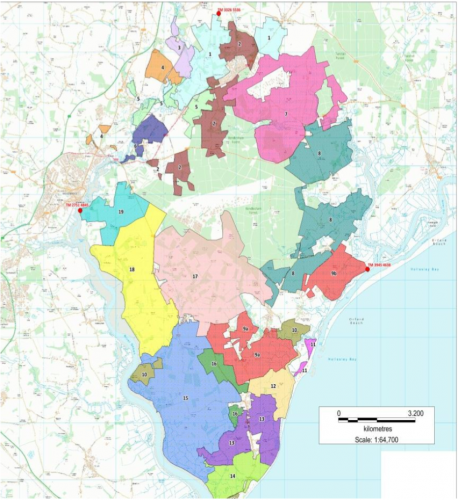Ref: CSFF090001
Lead: AJ Paul, aj@broxtead.com
Group members: 21
Length of agreement: 5
Area of group (Hectares): 8945
Priorities:
To help restore/maintain the Sandlings SPA, the Alde and Deben Estuary SPA, Ramsar and SSSI sites and Special Areas of Conservation, the group will:
Maintain, where necessary restore, and where possible enlarge the following priority habitats below:
- Lowland heathland & dry acid grassland, Lowland meadows, Coastal & floodplain grazing marsh, Saltmarsh, Vegetated shingle, Saline lagoons, Reedbeds and lowland fen, Riparian habitats, Traditional orchards, Ancient and native woodland, Arable field margins
Provide/improve habitat for the following species assemblages found within the area:
- Arable – Lapwing, Corn Bunting, Stone Curlew, Turtle Dove, Heathland – Dartford Warble, Woodlark, Nightjar, Woodland – Redstart, Spotted Flycatcher, Tree pipit, Lesser Redpoll, Breeding Waders – Curlew, Black-tailed Godwit, Snipe, Oystercatcher, Redshank. Heathland specialists -Adder, Silver-studded blue butterfly, Ant-lion
To provide a wild pollinator and farm wildlife package, the group will:
- Enhance arable habitat by establishing: Corridors of nectar flower plots and targeted wild bird food plots.
- Fallow plots for breeding lapwing, stone curlew/rare arable plants.
- Upgrade grassy field corners/ margins into flower rich areas.
- Restore hedgerows
Manage grassland to increase biodiversity
To improve water quality and reduce soil erosion, the group will endeavour to:
- Control the source/ movement of pollutants (nutrient, sediment and pesticides)
- Surface water and sediments, with particular reference to the control of faecal bacteria into Suffolk Coastal and Deben catchments
- Improve soil management particularly in relation to outdoor pigs.
To help maintain the unique Sandlings Landscape and Heritage, the group will endeavour to:
Bring woodland back into active management including:
- Pest Control
- Control bracken
- Maintain/restore other notable landscape features i.e. pine belts and hedges
- Buffer historic features.
Engagement with local people:
- Host farm walks
- Educational visits
- Revive traditional countryside skills.

